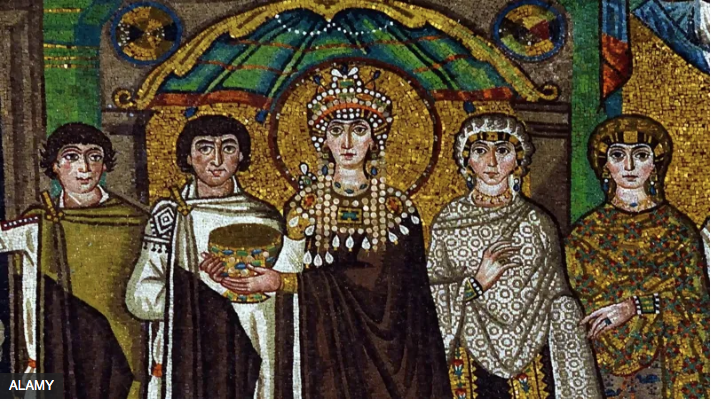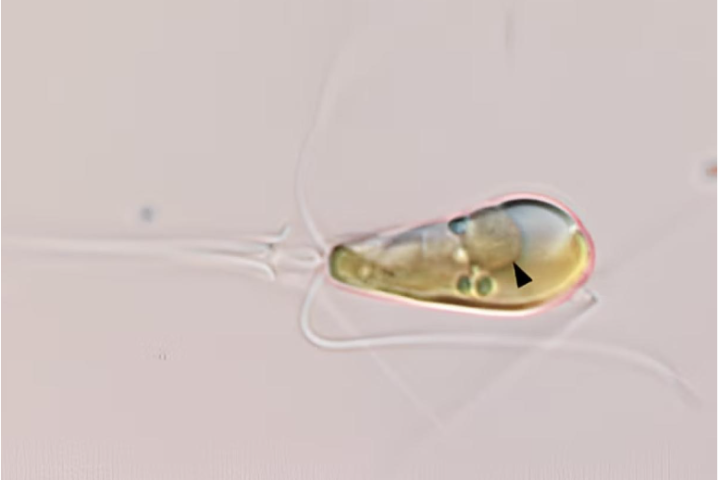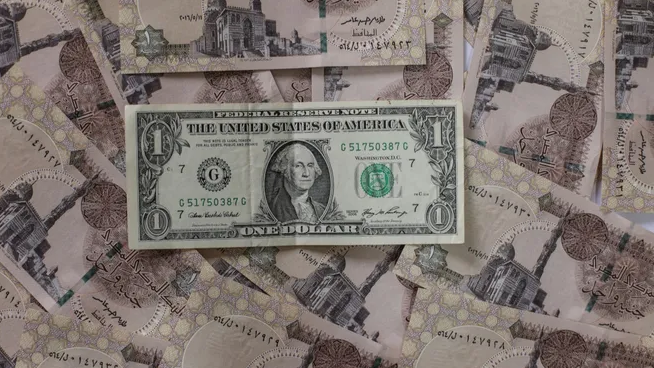More than three millennia after its abandonment, a team of archaeologists had been given permission to investigate – and they were looking for the royal tomb.
After traversing wide corridors and narrow passageways, and descending crumbling steps, they came upon a deep well. On one side, two identical statues guarded a sealed door: they had found it. Inside lay a treasure trove of ancient wonders – 2,000 objects, including jewels and a large gold hand. But there were also intriguing dark stains on the floor. The archaeologists sent a sample for analysis and ended up separating a vivid purple layer from the dust and mud.
Researchers have discovered one of the ancient world’s most legendary commodities. This precious product forged empires, toppled kings and cemented the power of generations of world leaders. The Egyptian queen Cleopatra was so obsessed with it that she even made it the sails of her ship, while some Roman emperors decreed that anyone caught wearing it – other than themselves – would be condemned to death.
This invention was Tyre purple, also known as shell purple. Although this noble pigment was the most expensive product of antiquity – it was worth more than three times its weight in gold, according to a Roman edict published in 301 AD. -No one today knows how to make it. By the 15th century, the recipes for extracting and processing the dye had been lost.

But why has this seductive color disappeared? And can it be brought back to life?
In a small garden hut in northeastern Tunisia, a stone’s throw from the ancient Phoenician city of Carthage, a man has spent the better part of the last 16 years crushing sea snails in an attempt to make their innards resemble Tyrian purple.
A symbol of strength, sovereignty and money, the Tyrian purple has been worn for millennia by the most privileged members of society. Ancient authors are very particular about the precise hue that deserved the name: a deep reddish purple, similar to that of coagulated blood, tinged with black. Pliny the Elder described it as having a “brilliant appearance when exposed to light”.
Thanks to the unique intensity of its color and its resistance to fading, Tyrian purple was worshipped by the ancient civilizations of southern Europe, North Africa and western Asia. It was so important to the success of the Phoenicians that it was named after their city-state of Tyre, and they were dubbed the “purple people”. The hue is found on everything from coats and veils to paintings, furniture, plaster, murals, jewelry and even funeral shrouds.
In 40 AD, the king of Mauretania was killed by surprise in Rome, on the orders of the emperor. Although a friend of the Romans, the unfortunate king had caused serious offence by entering an amphitheatre to watch a gladiatorial combat… wearing a purple robe. The jealous and insatiable covetousness aroused by this color was sometimes compared to a kind of madness.
Curiously, the most famous pigment the world has ever known didn’t start life as a magnificent ultramarine gemstone, like its contemporary lapis lazuli, or as a vibrant tangle of coral-pink roots, like the dye madder red. Originally, it was a transparent liquid produced by sea snails of the Murex family. More precisely, it was a mucus.
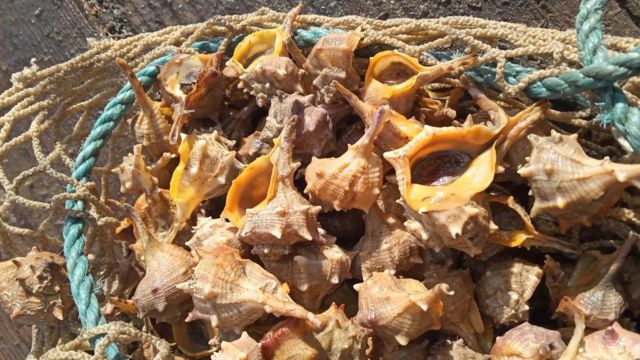
Tyrian purple can be produced from the secretions of three species of sea snail, each producing a different color: Hexaplex trunculus (bluish purple), Bolinus brandaris (reddish purple) and Stramonita haemastoma (red).
Once the snails had been collected, either by hand along rocky coasts or using traps baited with other snails – Murex sea snails are predators – it was time to harvest the slime. In some places, the mucous gland was cut off with a specialized knife. A Roman author explains that the snail’s slime then oozed from its wounds, “flowing like tears”, before being collected in mortars for grinding. Smaller species could also be ground whole.
“The problem was that people didn’t write down the important tips”.
But the certainty stops there. Accounts of the transformation of colorless snail slime into the dye of legend are vague, contradictory and sometimes patently erroneous – Aristotle said the mucous glands came from the throat of a “purple fish”. To complicate matters further, the dye industry was highly secretive – each manufacturer had his own recipe, and these complex, multi-step formulas were closely guarded.
“The problem was that people didn’t write down the important tricks,” explains Maria Melo, professor of conservation science at NOVA University in Lisbon, Portugal.
The most detailed document is that of Pliny, who explains the process in the first century AD. After isolating the mucous glands, they were salted and left to ferment for three days. This was followed by cooking, in tin or possibly lead pots, over a “moderate” heat. This continued until the mixture was reduced to a fraction of its original volume. On the tenth day, the dye was tested by dipping it into a cloth: if it came out tinted with the desired color, it was ready.
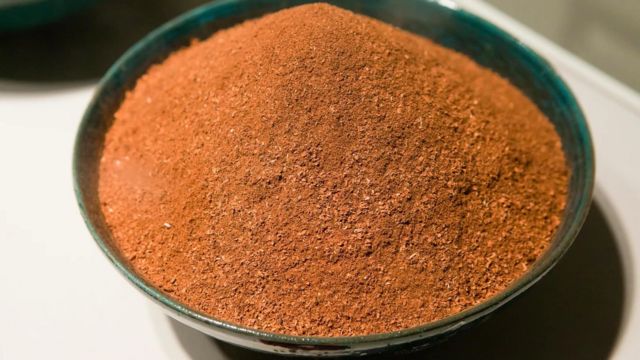
Since each snail contains only a tiny amount of mucus, it can take 10,000 to make a single gram of dye. Mounds of billions of sea snail shells have been reported in areas where the dye was once manufactured. In fact, the production of Tyrian purple has been described as the first chemical industry – and this applies not only to the scale of operations, but also to their demanding nature.
“It’s not really easy to obtain this color,” explains Ioannis Karapanagiotis, professor of conservation chemistry at Aristotle University in Thessaloniki, Greece. He explains that Tyrian purple is totally different from other dyes, whose raw material – such as leaves – already contains the pigment. On the contrary, the sea snail’s mucus contains chemical substances that can be transformed into dye, but only under the right conditions. “It’s quite astonishing,” he says. And yet, many crucial details of the process have long been forgotten.
In the early hours of May 29, 1453, the Byzantine city of Constantinople was taken by the Ottomans. It was the end of the Eastern Roman Empire and of the Tyrian purple.
At the time, the city’s dyeworks were at the heart of the industry. The color had become deeply linked to Catholicism: it was worn by cardinals and used to dye the pages of religious manuscripts. But it had already suffered from a succession of excessive taxes. Today, the Church has completely lost control of pigment production. So the Pope quickly decided that red would become the new symbol of Christian power. The pigment could be produced cheaply and easily by crushing cochineal beetles.
However, another factor may have contributed to the disappearance of Tyrian purple. In 2003, scientists came across a pile of sea snail shells at the site of the ancient port of Andriake, in southern Turkey. In total, they estimated that this heap of garbage dating from the 6th century A.D. contained around 300 cubic metres (10,594 cubic feet) of their remains, equivalent to 60 million individuals.
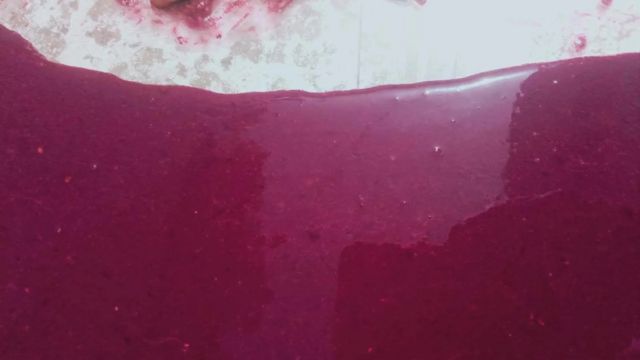
Curiously, while the bottom of the pile – where the snails were first discarded – contained some plump, older specimens, those discarded more recently were distinctly smaller and younger. One explanation is that the sea snails had been overexploited and there were no adult snails left. According to the researchers, this situation may have led to the extinction of dye production in the region.
But just a few years after this discovery, another has raised hopes of reviving this ancient color.
One day in September 2007, Mohammed Ghassen Nouira was taking his customary lunchtime stroll along a beach on the outskirts of the city of Tunis, Tunisia. “The night before, there had been a terrible storm, so the sand was littered with dead creatures, such as jellyfish, seaweed, small crabs and molluscs,” he recounts. That’s when he noticed a spot of color: an intense reddish-purple liquid was oozing from a cracked sea snail.
Nouira, who works as a consultant, immediately remembered a story he had learned at school – the legend of the purple of Tyre. He rushed to the local port, where he found many more snails, exactly like the one on the beach. Their small spiral bodies are covered in spikes, so they often get trapped in fishermen’s nets. “They hate them,” he explains. One man would pluck them from his net and put them in an old tomato can, which Nouira then took back to his apartment.
To begin with, Nouira’s experience was extremely disappointing. That evening, he opened the snails and searched for the bright purple entrails he’d seen on the beach. But there was nothing but pale flesh. He put it all in a bag for disposal and went to bed. The next day, the contents of the bag had transformed. “At the time, I didn’t know that purple was transparent at first – it’s like water,” he recounts.
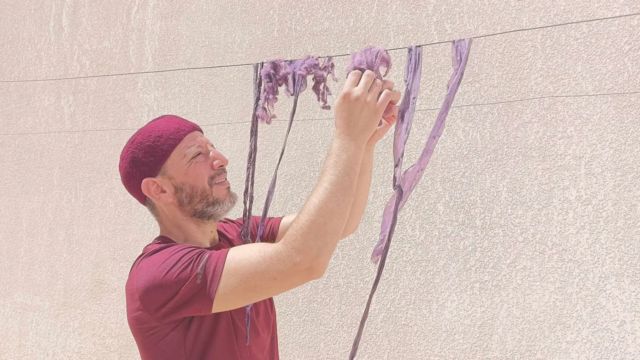
Scientists now know that for the chemicals in Murex snails to emerge from their colorless state, they need to be exposed to visible light. Initially, their secretions turn yellow, then green, turquoise, blue and finally purple, depending on the snail species. “If you carry out this process on a sunny day, it takes about less than five minutes to achieve this transformation,” explains Karapanagiotis.
But this is no instant Tyrian violet. The hue is actually made up of many different pigment molecules, all working together. Melo explains that there’s indigo, which is blue, “brominated” indigo, which is violet, and indirubin, which is red. “Depending on how you process your extract and dye it, you can get very different colors,” she explains. Even once the desired color has been achieved, the pigments still have to be transformed into dyes, for example by shaping them to adhere to the fabric.
An authentic shade
For Nouira, it was the start of a sixteen-year obsession to discover the lost method of making Tyrian purple. Although others had already studied the secretions of sea snails – including one scientist who transformed 12,000 individuals into 1.4 g of pure pigment powder using industrial techniques – Nouira wanted to make it the old-fashioned way and rediscover the authentic hue that had been revered for millennia.
When he picked up those first sea snails in his apartment in 2007, it was a week after his honeymoon. “My wife was horrified by the smell; she almost kicked me out… But I had to carry on,” he says.
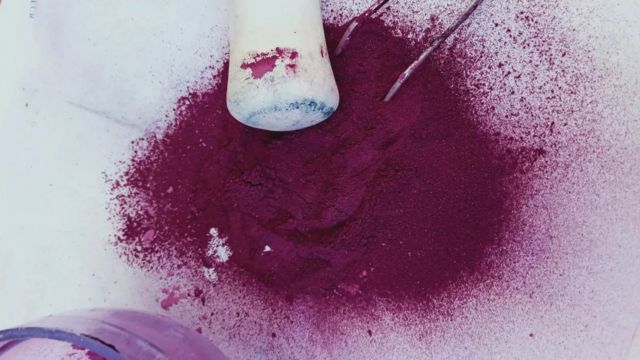
It took Nouira years to make his first powdered dye, and when he did, it was a pale indigo color, nothing like Tyrian purple, and extremely dusty. After years of trial and error, Nouira gradually discovered tricks he suspects were used in ancient times: mixing the secretions of the three species of sea snail mentioned in Pliny’s account, adjusting the acidity of the mixture, alternating exposure to sunlight and darkness during preparation, and cooking his mixtures for varying periods of time.
For his references, Nouira mainly used Byzantine mosaics depicting Justinian I and his wife Theodora, although he also later compared his results with preserved fabric fragments. In the end, he obtained pure pigments and dyes that he says are uncannily close to the real Tyrian purple – and live up to the old hype. “It (color) is very alive, very dynamic,” he explains. Depending on the light, it changes and shimmers… it keeps changing and playing tricks on your eyes.”

After decades of piquant experiments in his shed, Nouira has been invited to present his pigments and dyed products at exhibitions around the world, including the British Museum in London and the Museum of Fine Arts in Boston. He has also become a culinary expert on sea snail recipes; he recommends Tunisian pasta spiced with Murex, or fried Murex. “It’s crunchy, it’s delicious, it’s incredible,” he says.
But the Tyrian purple is once again under threat. Today, the challenge is not invasion, nor the secrecy surrounding its manufacture – although, like his ancient counterparts, Nouira is stealthy about the exact details of his methods – but extinction. Murex sea snails are threatened by a range of human influences, including pollution and climate change. Stramonita haemastoma, which gives the color a reddish tinge, has already disappeared from the eastern Mediterranean. So, whether the Tyrian purple has finally been resurrected or not, one thing is certain: it could easily be lost again.
Zaria Gorvett
BBC Future
source: https://www.bbc.com/afrique

